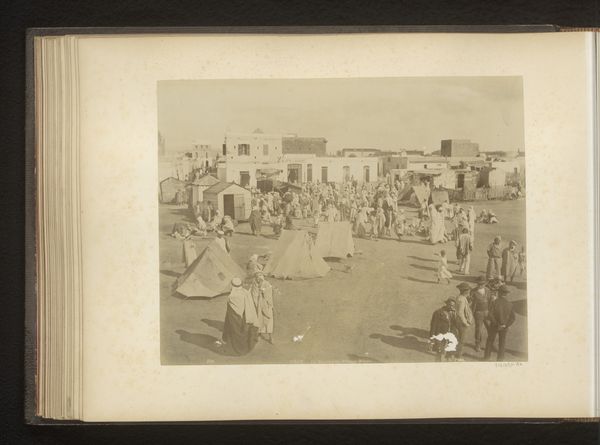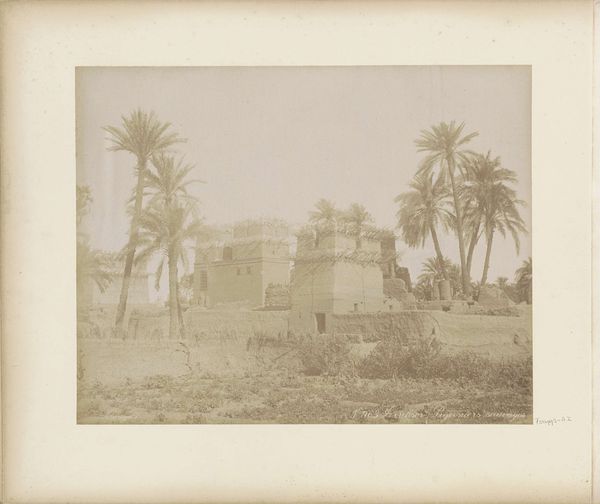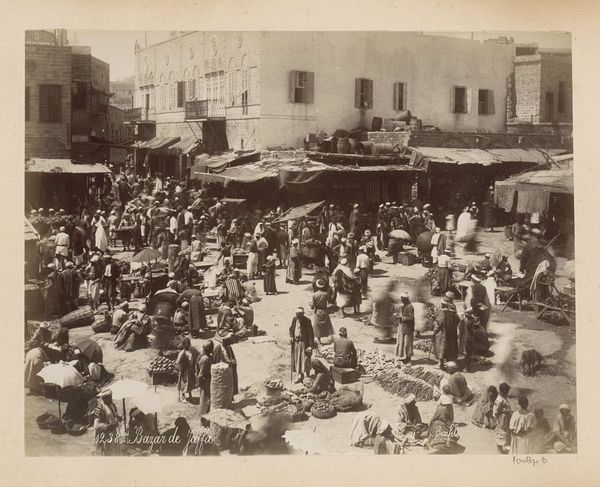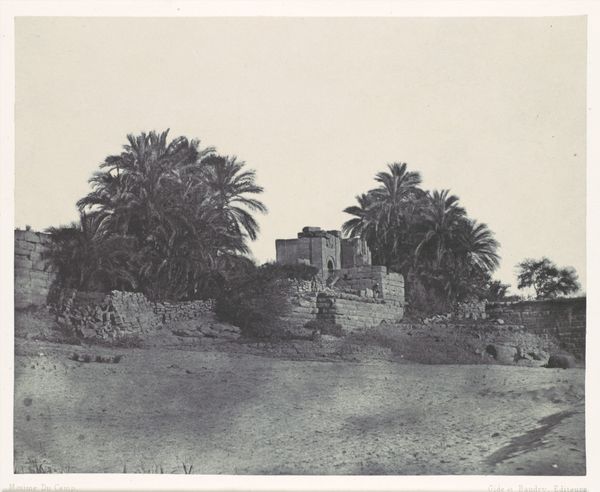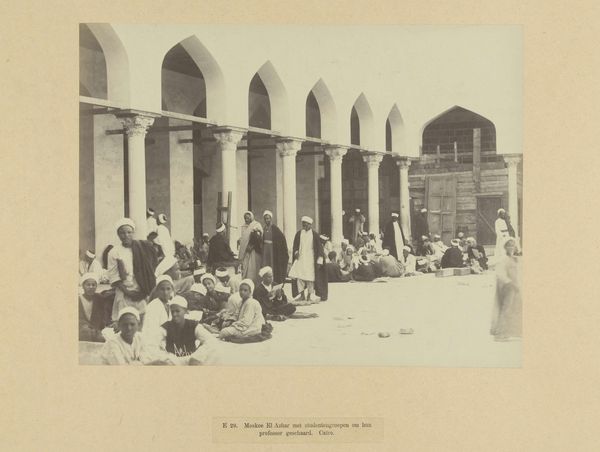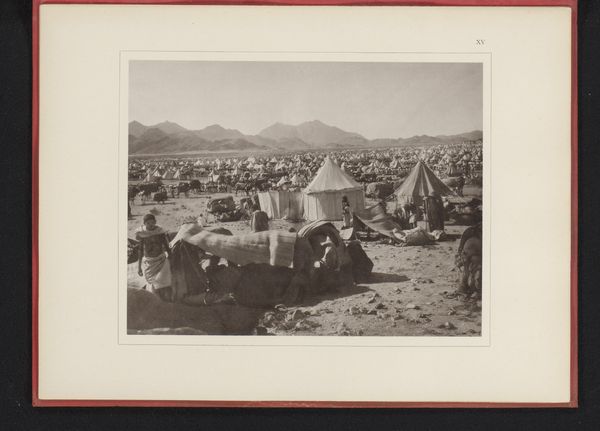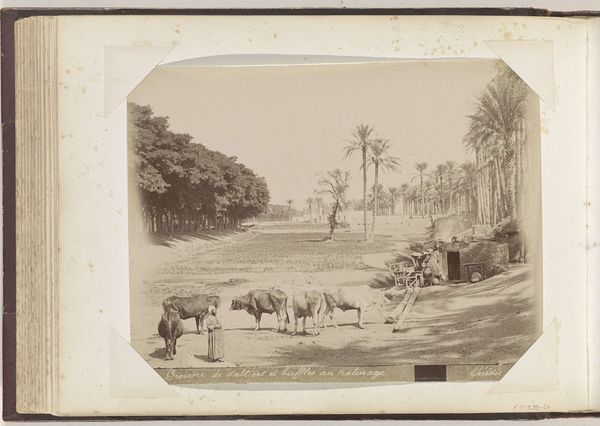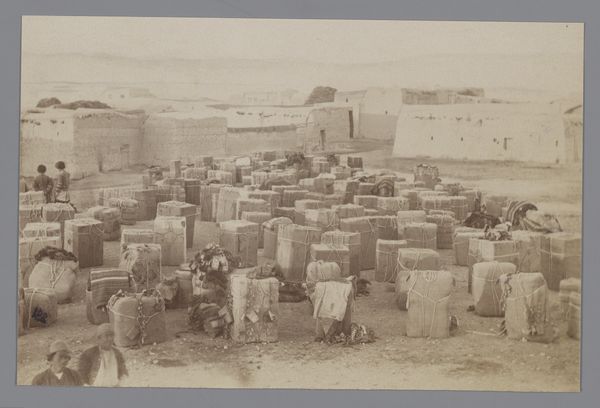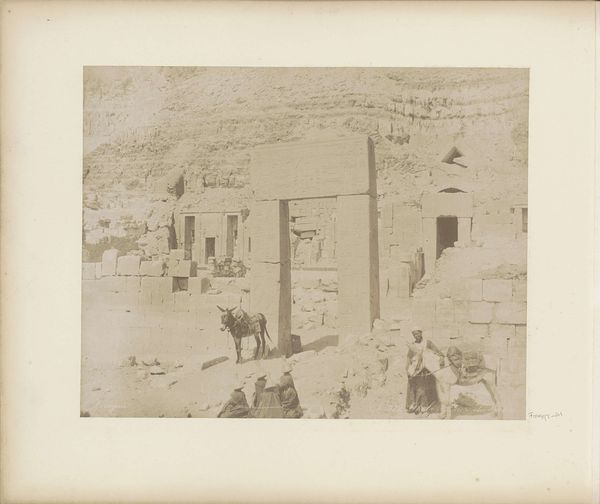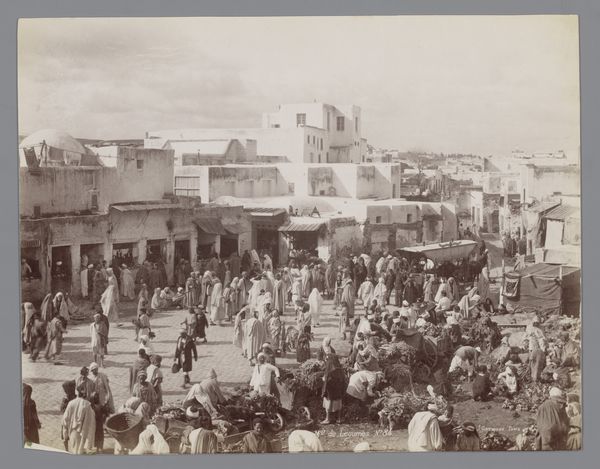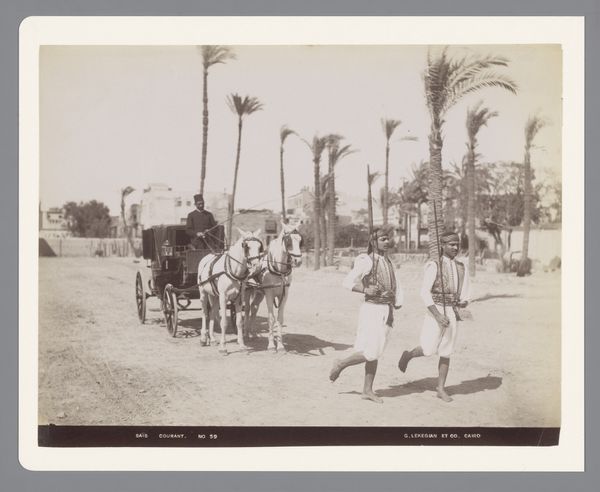
photography, albumen-print
#
portrait
#
landscape
#
photography
#
orientalism
#
cityscape
#
islamic-art
#
albumen-print
Dimensions: height 218 mm, width 277 mm
Copyright: Rijks Museum: Open Domain
Curator: Upon viewing this albumen print, "Markt van Assoul in Egypte", taken sometime between 1870 and 1890 by C. & G. Zangaki, my immediate impression is of a remarkably well-balanced composition. Editor: Yes, the interplay of light and shadow does create a kind of spatial harmony, but I can't help but wonder about the colonial gaze at play. These staged market scenes, prevalent in Orientalist photography, often romanticized or exoticized Middle Eastern life. The photograph, rather than merely recording reality, can be seen as actively constructing a specific vision for a Western audience. Curator: Precisely. And one could further analyse this photograph as a carefully constructed document reflecting a broader historical context of imperial power dynamics and cultural exchange. Editor: Let’s move towards the form, shall we? Note the photographers’ astute use of vertical and horizontal lines. The verticality of the palm trees and minaret, which rise assertively against the skyline, contrasting sharply with the horizontal sweep of the marketplace that stretches toward the city walls. This use of geometry creates stability. Curator: Stability, yes, but what is stabilized? It fixes a particular representation, perpetuating orientalist stereotypes that we have a duty to deconstruct when analyzing images such as this one. Consider also how this marketplace photograph omits specific realities such as colonial governance or cultural suppression, aspects prevalent in 19th century Egyptian experience under British influence. Editor: Of course, the albumen print method, a positive-negative process, contributes to the tonality and depth of field we observe here. The monochromatic palette evokes a sense of timelessness, allowing us to almost imagine ourselves transported. I see the play of scale among the figures. The artist seems to bring us closer to some human experience and then to distance us through light. Curator: Precisely the calculated emotional distancing! It positions the viewer as an outside observer, removed from and thus empowered to scrutinize the ‘other’. Even its artistry serves imperial aims of defining and categorizing cultures. Editor: Considering the photograph now I am drawn by the geometric forms and textures, creating a nuanced and balanced experience through shape, texture, and tone. Curator: And for me, I see in this artifact a potent historical document to be understood and deconstructed through rigorous interrogation to recognize not only its formal appeal but more pressingly its cultural and political meanings.
Comments
No comments
Be the first to comment and join the conversation on the ultimate creative platform.
